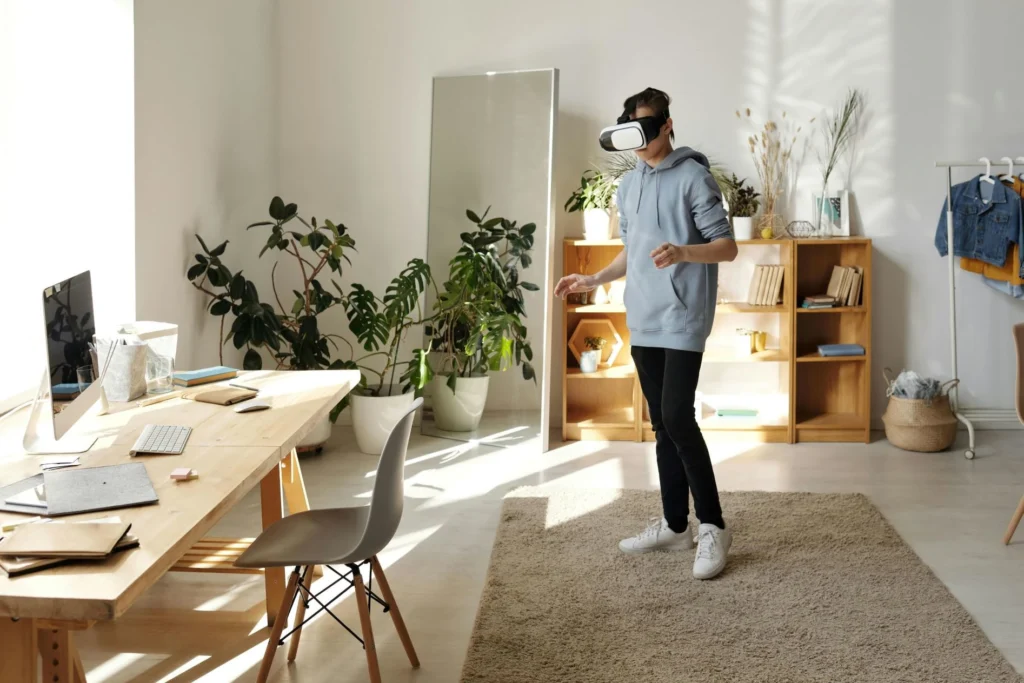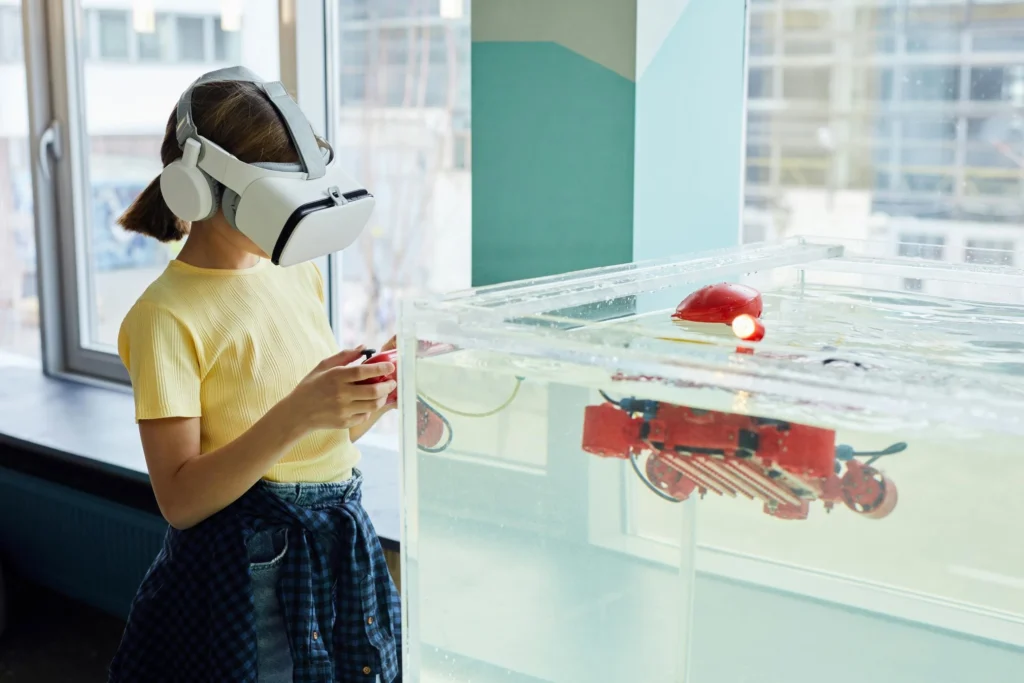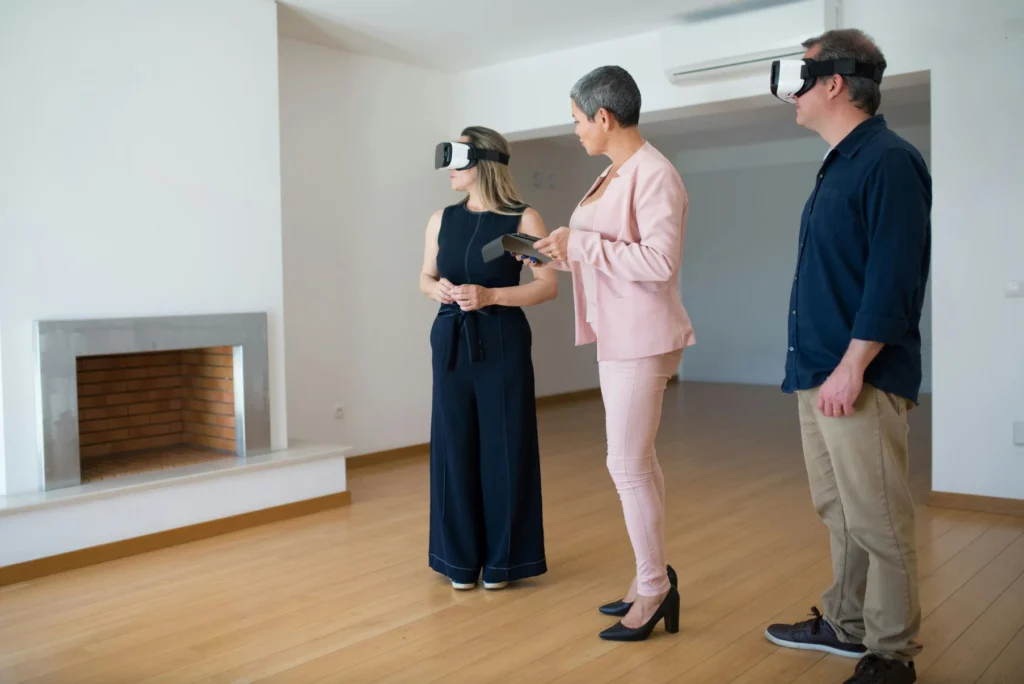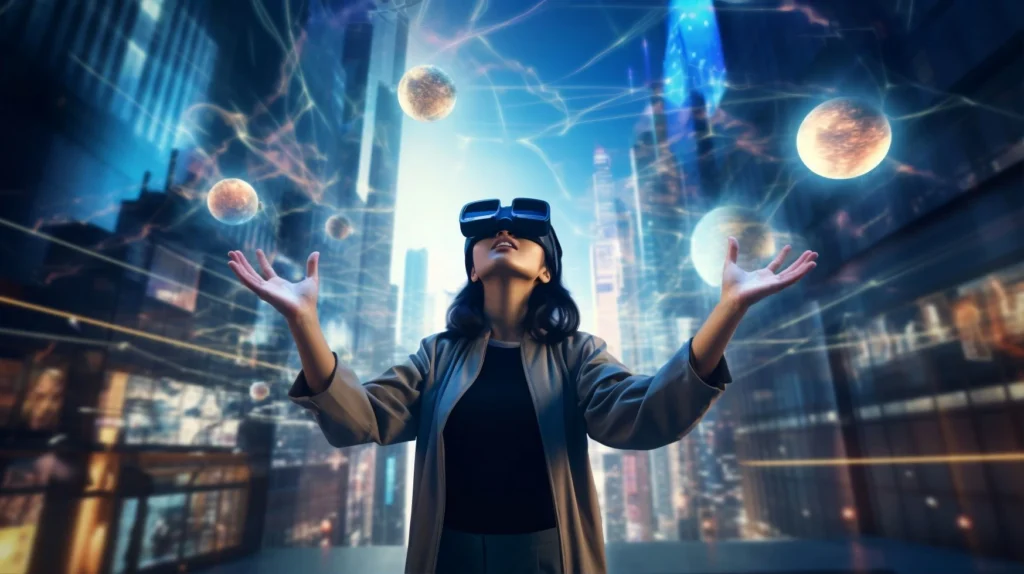You’ve probably heard the word “metaverse” thrown around lately. It’s been in the news, tech circles, and maybe even your social media feeds. It’s the tech world’s new buzzword, sparking excitement, confusion, and a whole lot of speculation.
But what is the metaverse? Is it just a fancy buzzword, or is it something that could actually change our lives? And more importantly, do you need to pay attention?
In this article, we’ll break down the hype, cut through the jargon, and explain the metaverse in simple terms. We’ll explore what it means for you, whether you’re a tech-savvy early adopter or someone who just wants to understand the next big thing. And by the end, you’ll have a clear picture of whether the metaverse is something you need to care about.
Let’s demystify the metaverse together.
So, What Is the Metaverse, Anyway?
The metaverse isn’t just one thing; it’s a concept, a vision for the future of the internet. Imagine a 3D version of the internet where you don’t just view content on a screen but step inside it. It’s a virtual world, or rather, a network of connected virtual worlds, where you can interact with other people, digital objects, and experiences.
To truly understand the metaverse, picture this: You slip on a VR headset, and suddenly, you’re not just looking at a screen—you’re inside it. You can walk around a virtual office, chat with colleagues who are thousands of miles away, attend a concert with friends who are sitting on their couch in another country, or even try on clothes in a virtual store before buying them in real life. It’s envisioned as a place for work, education, socializing, and even conducting business.
Sounds like science fiction? Well, in some ways, it still is. The metaverse is in its early stages of development, and there’s no single agreed-upon definition. But the idea is gaining traction, and tech giants like Meta (formerly Facebook) are investing billions in its development.
Some key features of the metaverse include:
- Immersive Experience: It uses virtual reality (VR), augmented reality (AR), or other technologies to create a sense of presence and immersion in the virtual world.
- Interoperability: Different virtual worlds can be connected, allowing you to move seamlessly between them.
- Digital Economy: You can buy, sell, and own digital assets like virtual real estate, art, or even your own unique avatar.
- Social Interaction: It’s a place to connect with friends, meet new people, and attend social events, all in a virtual setting.
But before we get too carried away with the possibilities, let’s address a common misconception. The metaverse isn’t just a fancy new term for virtual reality. While VR is one way to access the metaverse, it’s not the only way. You might also experience it through your computer, smartphone, or other devices.
The Term “Metaverse” – A Brief History
The term “metaverse” originated in Neal Stephenson’s 1992 science fiction novel Snow Crash, which described a virtual world parallel to the real world. Since then, the concept has been explored in various forms in popular culture and technology. Early virtual worlds like Second Life and online games like World of Warcraft laid the groundwork for the metaverse concept, but it wasn’t until recent technological advancements and growing interest from major tech companies that the metaverse started to gain significant mainstream attention.
Why is Everyone Talking About It?
There are a few reasons why the metaverse is generating so much buzz:
- Potential for Disruption: Like the internet revolutionized communication and commerce, the metaverse has the potential to disrupt industries and change the way we work, learn, and socialize.
- Big Tech Investment: Tech giants like Meta (formerly Facebook), Microsoft, and others are pouring billions into developing metaverse technologies and platforms, signaling that they see it as the next big thing.
- Cultural Phenomenon: The concept of a virtual world isn’t new (think Second Life or even older online games). But the metaverse is gaining mainstream attention thanks to pop culture references, celebrity endorsements, and even real estate speculation in virtual worlds.
- Technological Advances: Advancements in virtual reality (VR), augmented reality (AR), and blockchain technology are making the metaverse more feasible and accessible than ever before.
- Economic Opportunities: The metaverse is expected to create a new digital economy with virtual goods, services, and even jobs. Some experts predict it could be a multi-trillion-dollar market in the future.
Although the metaverse is still in its early stages, and its full potential is yet to be realized, the hype is real, and it’s worth paying attention to see how this technology evolves and shapes our future.
Do You Need to Care About the Metaverse?
The short answer? It depends.
If you’re a tech enthusiast who loves being on the cutting edge, then the metaverse is definitely worth exploring. It’s a chance to be part of something new and potentially revolutionary. You can experiment with virtual worlds, create digital art, attend virtual events, and even make money in the metaverse economy.
But what if you’re not a tech-savvy early adopter? Do you still need to care?
The answer is maybe. Even if you’re not interested in immersing yourself in virtual reality, the metaverse could still impact your life in the future. Here’s how:
- Work: Some companies are already experimenting with virtual offices and collaboration tools in the metaverse. In the future, you might find yourself attending virtual meetings or collaborating with colleagues in virtual workspaces.
- Education: The metaverse has the potential to revolutionize education, making it more immersive and interactive. Students could take virtual field trips, attend virtual lectures, or even participate in virtual labs.
- Socializing: As the metaverse becomes more mainstream, it could change the way we connect with friends and family. Imagine attending virtual parties, concerts, or even weddings.
- Shopping: The metaverse could transform the shopping experience, allowing you to try on clothes virtually, explore virtual showrooms, or even customize products in real-time.
Of course, it’s important to be realistic. The metaverse is still in its early stages, and it’s not clear how quickly or extensively it will be adopted. There are also concerns about privacy, security, and the potential for addiction.
But if you’re curious about the future of technology and how it might shape our lives, then the metaverse is worth paying attention to. It may not be for everyone, but it has the potential to change the way we live, work, and play.
The Metaverse: A Double-Edged Sword?
The metaverse, like any new tech, has its own pros and cons. Let’s take a closer look at both sides:
The Good:
- Limitless Possibilities: The metaverse offers an extensive canvas for creativity, innovation, and new experiences. You can explore virtual worlds, create digital art, attend events, and even build your own virtual businesses.
- Enhanced Social Connections: In the metaverse, you’re not limited by where you live. You can connect with anyone, anywhere, in a more immersive and interactive way. Imagine connecting with friends, family, or colleagues from different continents in a shared virtual space, where interactions feel almost as real as face-to-face meetings.
- New Economic Opportunities: The metaverse is poised to create a new digital economy with virtual goods, services, and jobs. Creators, entrepreneurs, and businesses can monetize their virtual assets and skills in innovative ways. This could lead to new career paths, such as virtual real estate agents, digital fashion designers, or even metaverse tour guides.
- Improved Accessibility: It can open up new opportunities for people with disabilities, allowing them to take part in activities and experiences that might be difficult or impossible in the physical world. For example, someone with limited mobility could explore a virtual museum or attend a virtual concert without leaving home.
- Innovative Education and Training: The metaverse can revolutionize education and training, making it more engaging, interactive, and personalized. Students can explore historical sites, practice medical procedures, or even learn to fly a plane – all in a virtual environment.
The Not-So-Good:
- Technical Limitations: The current technology may not be able to achieve the vision of a seamless and immersive metaverse fully. While VR and AR technology has advanced significantly, there are still limitations in terms of processing power, graphics capabilities, and user comfort. Overcoming these technical hurdles will be crucial for creating a truly immersive and accessible metaverse experience.
- Interoperability: Creating a truly interconnected metaverse with different platforms and virtual worlds is a complex challenge. It is important to establish shared standards and communication rules to make it easy for users to move between different virtual worlds easily and bring their digital assets and identities. To achieve this high level of interoperability, different companies and organizations need to collaborate and work together.
- Regulation and Governance: As the metaverse grows, governments and organizations will need to establish rules and regulations to ensure safety, fairness, and accountability. Issues like intellectual property rights, virtual crime, and consumer protection will need to be addressed to create a safe and equitable metaverse for all.
A Glimpse into the Metaverse Today
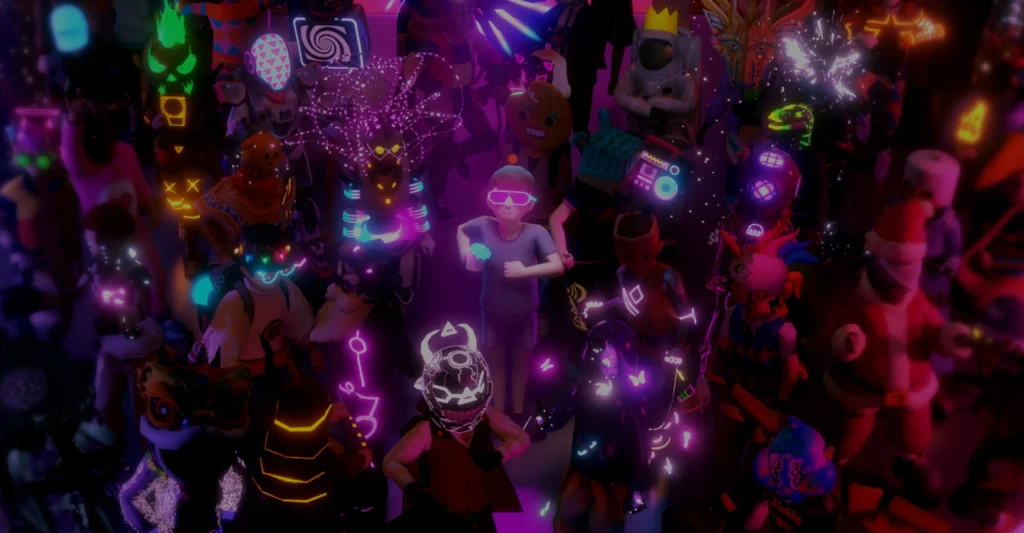
Photo credit: Decentraland
To better understand the potential of the metaverse, let’s look at some existing platforms that offer a glimpse into what it might become:
- Decentraland: A virtual world where users can buy, sell, and develop virtual land, creating a thriving economy for digital assets and experiences.
- The Sandbox: A blockchain-based metaverse where users can create and monetize their own games and experiences using NFTs (non-fungible tokens).
- Roblox: A platform popular with younger audiences, Roblox allows users to create and share games and experiences in a user-generated virtual world.
The Road Ahead: Navigating the Metaverse
The metaverse is still in its early stages, and its future is uncertain. Although it has great potential, there are also significant challenges and concerns that need attention. As technology keeps advancing, we can expect to see new and creative ways the metaverse can be used. As we move into this new digital world, it’s really important to think about both the benefits and the drawbacks that might come with it. The metaverse has the potential to be an awesome tool for bringing people together, unleashing creativity, and driving innovation, but we need to be careful and make sure it’s created responsibly and ethically.
The Bottom Line: The Metaverse is Here to Stay
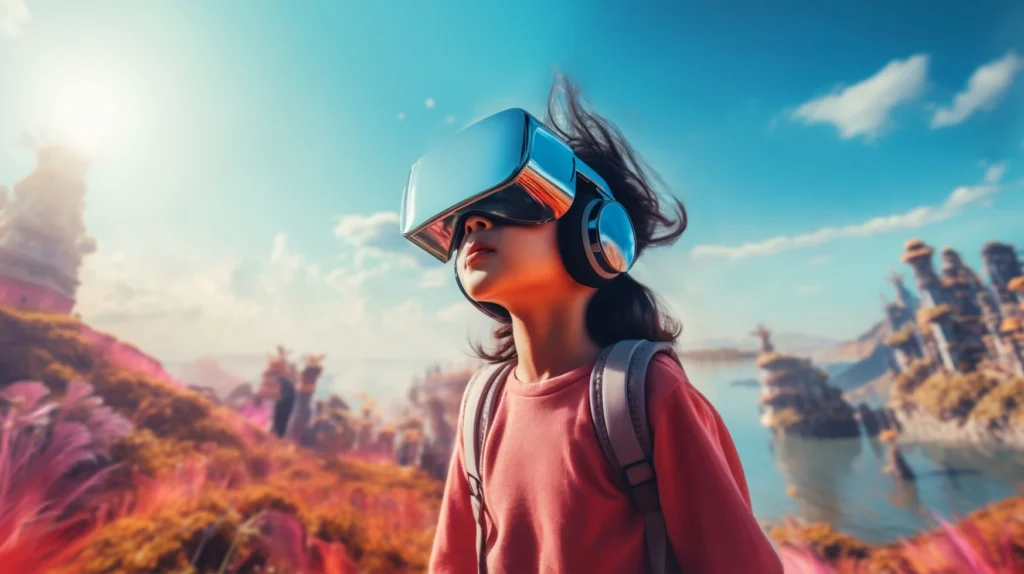
Whether you’re ready or not, the metaverse is here to stay. It’s a fast-developing technology with the potential to change our lives in many ways. By understanding its potential and challenges, we can prepare ourselves for the future and shape the metaverse into a force for good.
Remember, the metaverse is not a destination but a journey. It’s a constantly evolving landscape that we’ll be exploring and shaping together in the years to come. So buckle up and get ready for an exciting ride!
FAQs
What is the metaverse in simple terms?
The metaverse is a vision of a more immersive and interactive internet, where you can enter virtual worlds and interact with others in 3D environments. Think of it as a network of interconnected virtual spaces where you can work, play, socialize, learn, and even conduct business.
How is the metaverse different from virtual reality (VR)?
While VR is one way to experience the metaverse, it’s not the only way. You can also access virtual worlds through your computer, smartphone, or other devices. The metaverse encompasses a broader concept of interconnected virtual spaces and experiences, not just VR technology.
What are some examples of existing metaverses?
Decentraland, The Sandbox, and Roblox are some of the most popular metaverse platforms today. They offer a glimpse into what the future of the metaverse might look like, with virtual land ownership, user-created games and experiences, and thriving digital economies.


